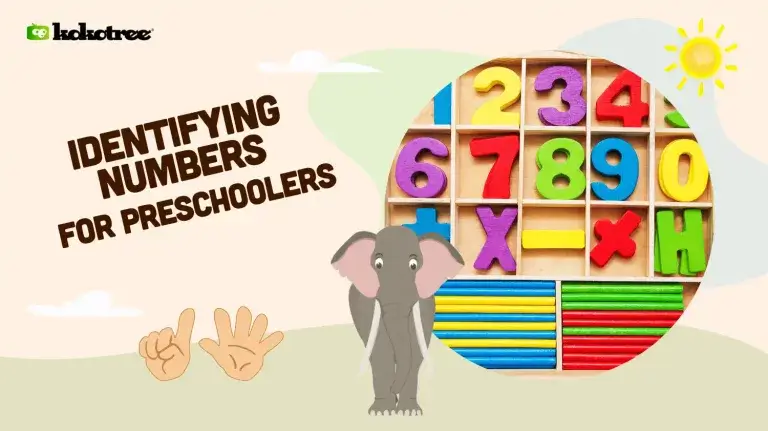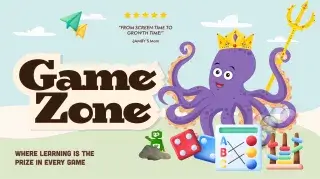

As a parent, I know how important it is to give our kids a head start in their learning journey. That’s why I’m sharing my expertise on a fundamental skill – identifying numbers. It’s a crucial stepping stone toward math proficiency and overall cognitive development.
I’ve got some tried-and-true strategies that’ll make this process fun and engaging for your preschooler. From interactive games to playful number rhymes, I’ll guide you through the best ways to introduce numbers to your little learner. So, let’s dive into the magical world of numbers together!
Identifying numbers early in life is a fundamental skill that sets the stage for a child’s successful learning journey. It’s a process that paves the way for crucial concepts such as counting and basic arithmetic, essential building blocks for preschool math proficiency.
Training our little learners to recognize numbers significantly contributes to their cognitive development. By understanding the correlation between a number and an amount, children begin to grasp the core idea of quantity. This ability plays a significant role in everyday activities, whether sorting toys by numbers, counting their fingers, or knowing the street number of their home.
The role of numbers in a child’s life extends beyond the realm of mathematics. They’re crucial to understanding many other fundamental aspects of life and the world around them. For instance, they help children comprehend the concept of time, be it days, weeks, or months of the year. They teach children about sequencing, which comes first, second, third, and so on.
Consider our children’s perception of age, for instance. At such a young age, they’re already aware of the significance of being three, four, or five years old and eagerly anticipate their next birthday. Numbers are instrumental in instilling a sense of identity by enabling them to understand their place in a family unit or social strata.
That’s why fostering mathematical thinking in our little learners is critical. However, the process should be fun and engaging for it to be effective. Incorporating number-focused games, activities, and rhymes in their daily regimen offers an exciting way to enrich their numerical literacy.
Children can build a robust numerical foundation with the right strategies and tactics. Teaching them how to identify numbers is akin to introducing them to a new language; it gives them the tools to interpret, understand, and articulate in the mathematical world.
Developing preschoolers’ numerical literacy does not have to be a tedious task. It’s about blending numbers into their daily routine and making it as fun and engaging as possible. With ample creativity, parents can turn everyday mundane tasks into potent learning opportunities. Let us look into a few practical strategies.
One highly effective method I’ve discovered is making numbers a constant part of children’s daily activities. It’s easier than it sounds! It can be as simple as counting the steps while they walk or climb, showing the numbers in a recipe while baking, or having them distribute snacks evenly among their peers.
Creating routines around these activities reinforces their counting abilities and sustains their interest in numbers. For instance, establishing a Number of the Day ritual helps them familiarize themselves with sequential numbers and their notation. Every day, announce a “Number of the Day” and encourage your child to identify it in various places – perhaps on a calendar, a scoreboard, or even the television remote.
Child-friendly chores, like setting the table or sorting laundry by colors or family members, can also strengthen their concept of quantity. Remember—these activities are entertaining and play a pivotal role in setting the stage for future math concepts.
Besides daily activities, technology in the guise of educational apps can be a boon to teaching preschoolers numbers. These apps often utilize vibrant visuals, catchy tunes, and interactive tools that can make learning numbers exciting for young minds. Studies have shown that digital learning resources can boost children’s understanding of numerical concepts.
For example, apps like Kokotree or Todo Math have number recognition games, puzzles, and mazes. These apps instill number sense and arithmetic basics in a fun-filled environment, encouraging children to learn at their own pace. Implementing educational games and apps can foster number literacy, hand-eye coordination, and problem-solving skills.
By innovatively incorporating numbers in everyday activities and utilizing educational apps, parents can pave the way for solid numerical literacy in their children. From identifying the numbers to understanding their practical applications, these teaching methods are a surefire means to stoke young, curious minds. These strategies ensure that number recognition becomes a fun-loving task for them rather than a strenuous learning process.
Consider this: teaching numbers to preschoolers is akin to teaching them a new language. If done right, this new language of numbers can become an exciting journey toward analytical and cognitive growth. Remember that each child learns in a unique way and at different speeds. Being patient and offering continued support and encouragement is vital in helping children harness the language of numbers.
Teaching preschoolers to identify numbers isn’t always a walk in the park. These tiny humans are energetic, and their attention spans can be as short as lightning flashes.
One of the biggest challenges I’ve encountered as an educator is the diverse learning paces among preschoolers. No two children are alike; they all have unique learning styles and development timelines. While some kids may catch on to numbers quickly, others might need more repetitions or different teaching methods. Patience is vital, but providing them with various learning opportunities is essential.
Another challenge lies in maintaining engagement. Numbers can quickly become another boring lesson for kids if we don’t take measures to spice it up. We need to turn number recognition into an exciting journey to ignite more interest. Interactivity and playfulness are essential in teaching numbers to preschoolers, and their lack can lead to disinterest and learning hurdles.
Many parents and teachers tend to stick to traditional teaching methods, which can be less effective for today’s tech-savvy kids. Integrating technology, such as the educational apps and games mentioned earlier, can help conquer this hurdle. Adapting to modern teaching strategies becomes inevitable in our quest to simplify number identification for young learners.
With preschoolers, it’s also a challenge to translate abstract number concepts into tangible ones. To understand ‘three,’ the child should be equipped to visualize the value, not just the symbol. Numbers are not just squiggly lines; they possess real-world implications. Letting the kids connect these dots forms another obstacle in our teaching expedition.
Despite these hurdles, overcoming them isn’t beyond our reach, with numerous strategies at our disposal to simplify numerical literacy for our little learners.
Teaching preschoolers to identify numbers isn’t always a walk in the park. It’s a task that calls for patience, innovation, and a good understanding of children’s learning curves. But with the right mix of playful interactivity and modern teaching strategies, we can make number recognition a fun and engaging experience for our tech-savvy tots. Remember, it’s not just about teaching them to count. It’s about helping them visualize and grasp the value of numbers. The road to numerical literacy for preschoolers may be filled with challenges, but it’s a journey worth taking. After all, every successful mathematician started with learning 1, 2, 3.



